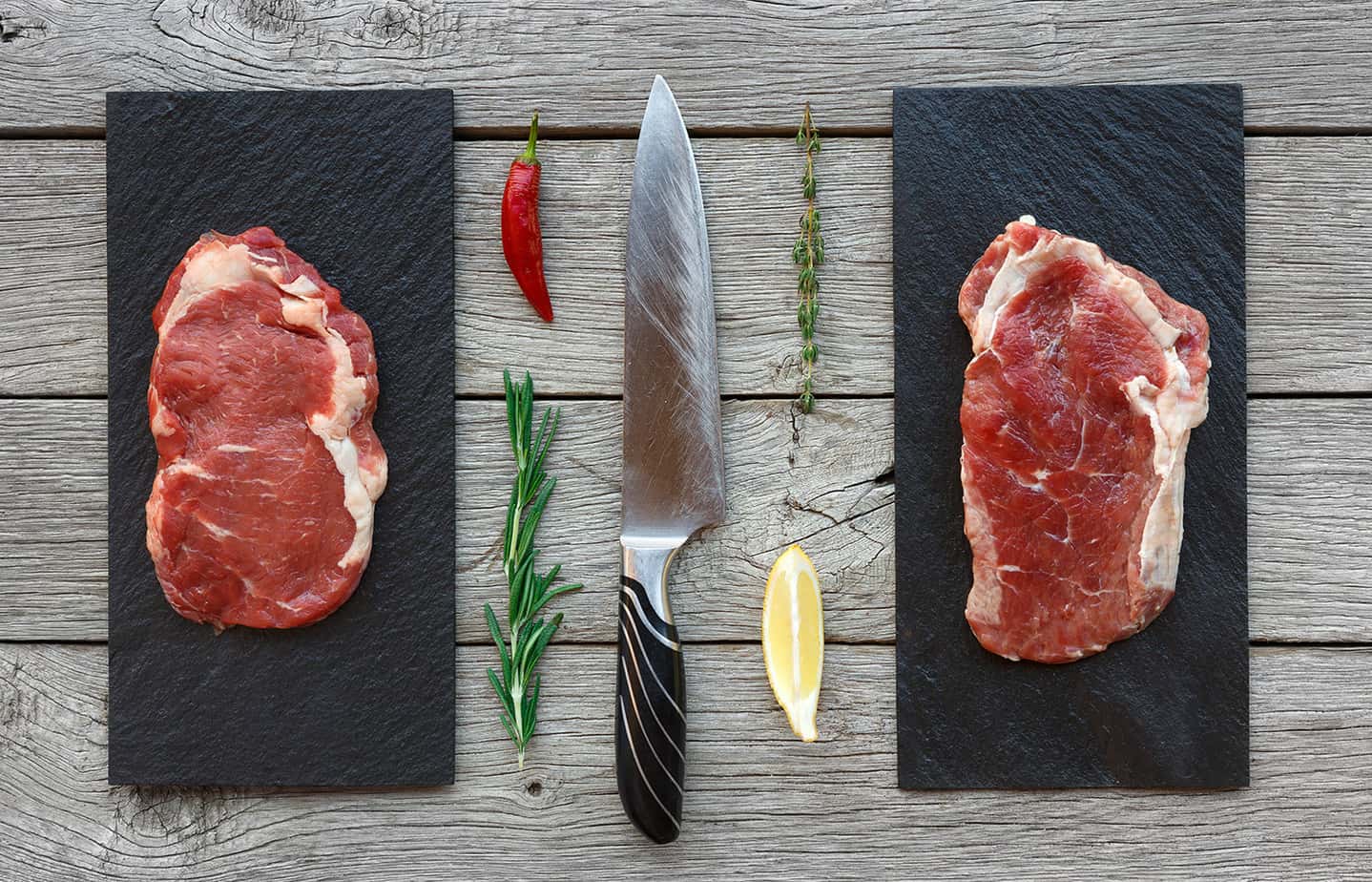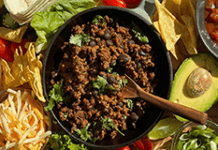All beef is naturally nutrient-rich, high in iron, zinc, B vitamins, and hunger-curbing protein; but how are grass-fed and grain-fed beef different, and is one more nutritious than the other? Bottom line: the nutrition differences are arguably not significant enough to make a marked difference in your overall health.

After weaning, all cattle start out on pasture eating grass.
The distinction between grass and grain-fed cattle comes down to how they are “finished,” or their diet before market.
At about three to four months before market, grain-fed cattle gradually transition from pasture to grain-feed (corn or barley) in feedlots such as barns or fenced-in areas.
Grass-fed cattle will continue their life on fresh, dried or fermented grasses. Compared to grain fed, grass-fed cattle take longer to get to market weight, thus the higher price point.
Yes, grass fed beef is leaner, but not by much.
In the context of the total diet, however, that amount is unlikely to have an impact on overall health. Further, many assume all the fat in beef is saturated, however, half the fat in beef is monounsaturated, the same type of fat found in olive oil. And keep in mind, trimmed sirloin steak is just as lean as skinless chicken breast.
Neither grass nor grain-fed beef are a significant source of omega-3 fats.
Bottom line: yes, grass-fed beef has more omega-3 fats than grain- fed beef, but regardless, they are both poor sources of omega-3 fats. Choosing grass or grain-fed beef as a source of omega-3 fats is misguided. Instead, choose omega-3 rich foods like fatty fish, flax oil, walnuts or hemps seeds.
No significant differences in cholesterol or nutrients.
In the majority of studies reviewed, there were no differences in the level of cholesterol or in nutrients such as zinc and iron. There were small differences in vitamin B, potassium and calcium, but again, nothing meaningful in the context of the total diet.
Take home advice from a dietitian.
For most Canadians, a focus on building a healthy plate would do more to improve health than any one isolated change, such as choosing grass over grain-fed beef. That’s because on average 50% of the calories in the Canadian diet come from ultra-processed food such as sweet baked goods, fast food, pop, and salty snack foods.
Replacing these foods with naturally nutrient-rich choices, or food closest to its natural state, is a worthwhile goal.
Breakfast, lunch and dinner, build a healthy plate with:
- ½ vegetables and fruit (fresh and frozen);
- ¼ quality protein (beef, fish, lentils, nuts, beans), and;
- ¼ whole grains (barley, brown rice)
For nutrition advice you can trust visit Unlockfood.ca.
Carol Harrison is a registered dietitian, follow Carol on Twitter and IG: @greatmealideas







So not much difference in nutrition, do what does it come down too? Personal preference??
Whether you buy grass-fed beef or grain-fed beef, both can be equally delicious and nutritious – there are many factors such as aging process, marbling, etc that come into play for beef flavour and texture as well. Best to give them both a try and see what you prefer. There can also differences in flavour and mouthfeel depending on the type of grain used for feed – if you get the chance, it is an interesting taste-test is to try corn-fed beef vs barley fed. Much like a wine, beef has its nuances depending on where it is raised, how it is butchered, what cut you use and how it is cooked and even carved – much like the relationship of grapes, soil and the wine-maker.